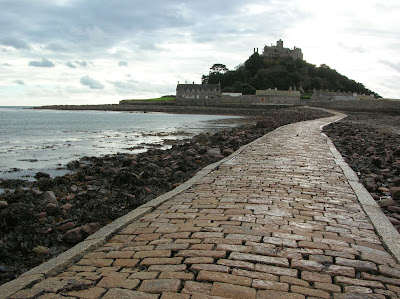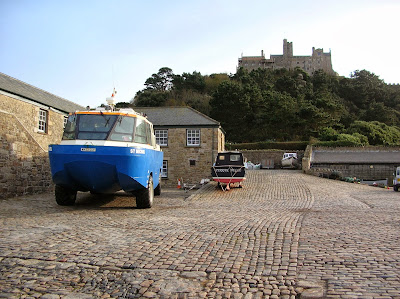Rum can reached by Calmac ferry from Mallaig. It is a vehicle ferry but you cannot take your car without special permission.
There are traces of human settlement on Rum as far back as 8,500 years ago. It is likely that the people on Rum at this time were after the volcanic bloodstone, which was used as a flint substitute. The population peaked in 1795 at 450 but in 1826 the landlord Maclean of Coll evicted 300 people to make way for sheep. They were forced to emigrate to Nova Scotia. By 1828 all but 2 families had followed them. When the price of sheep fell, they too were replaced this time by deer and the island became the sporting estate of the Marquis of Salisbury.
In 1886 it was bought by John Bullough – a cotton textile manufacturer from Lancashire. His son George had the pseudo baronial style Kinloch Castle built in red Annan sandstone. The house was completed in 1901. He imported large quantities of topsoil for the grounds. The Bulloughs never spent more than 2 to 3 months a year on the island. George died in 1939. His wife Monica did not die until 1967 but she abandoned the island in 1954 and sold it to the Nature Conservancy Council as a National Nature Reserve in 1957. Since 1992 it has been owned and managed by Scottish Natural Heritage. Kinloch Castle appeared on the BBC TV series Restoration and the island has featured on the BBC's Autumnwatch for the red deer rut in October.
Kinloch Castle
The interior of Kinloch Castle is much as the Bullough family left it and it includes many animal skins on the floors. There is also an Orchestrion, which is a mechanical organ, which imitates 40 different musical instruments. It is still in working order and we were given a demonstration of it during our guided tour.
Excellent accommodation for £14 a night!
We were staying in the hostel, which is at the back of the building in the old servants' quarters in a dormitory but on our last night my friend and I were offered a free upgrade to stay in two of the display bedrooms that visitors are shown on their guided tours, as they needed our dormitory for some men who had arrived unexpectedly from one of the bothies. It was a bit creepy - it felt like staying in a museum! The bothies offering very basic accommodation are at Guiridil and Dibidil. There is a small shop in Kinloch. The hostel has self-catering facilities but also offers breakfast and evening meals.
Bedroom where I slept for a night in Kinloch Castle
Bullough Mausoleum, Harris
George and his wife Monica are buried here. George blew up the first mausoleum that he had built with an interior of colourful Italian mosaics, when one of his guests told him it looked like a public toilet! Parts of it can still be seen just up the hill from the current mausoleum.
Harris
There are no tarmac roads on Rum but there are tracks from Kinloch to Harris, 7 miles away and Kilmory, 5 miles away. For the more energetic there are the Rum Cuillins of Askival, Hallival, Trollaval and Orval, seen from a distance in the photo below.
Harris
a long way to walk for one geocache - a 14 mile round trip!
Kilmory
this is one of the best places to see the red deer
Kinloch Jetty
Nearly halfway to Kilmory from Kinloch
Perched stone
Rum is famous for its midges but we saw very few, as it was quite windy when we were there. Thousands of manx shearwaters have their burrows high up on the highest mountains but they only return to them under cover of darkness. There are also wild goats and Rum ponies but I don't remember seeing them.













































